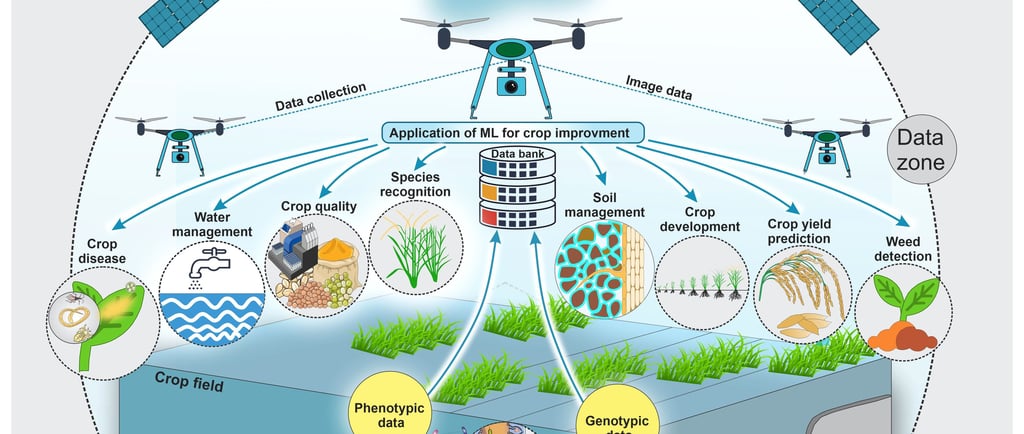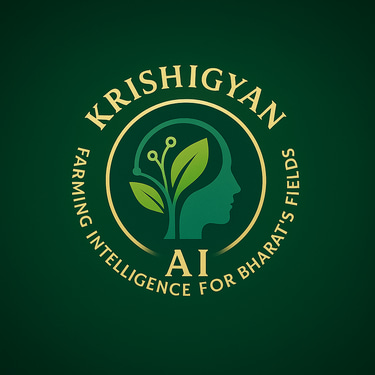AI Models for Climate Prediction in Farming
Empowering Agriculture with Data-Driven Foresight Agriculture has always been at the mercy of the climate. From droughts and floods to unseasonal rains and heatwaves, changing weather patterns are among the biggest threats to global food security. In a country like India—where over 50% of farmland is rainfed—climate uncertainty can make or break a farming season. Today, with the rise of Artificial Intelligence (AI), farmers no longer need to rely solely on traditional knowledge or generic forecasts. AI-powered climate prediction models are providing farmers with timely, localized, and actionable insights to make smarter decisions about sowing, irrigation, pest control, and harvesting.
HawkEye
5/13/20252 min read


The Need for Advanced Climate Prediction in Farming
Conventional weather forecasts provide general information—region-wide temperature, humidity, or rainfall patterns. While useful, these predictions often lack granularity and lead time, especially for decisions at the field level.
Modern farming demands:
Micro-climate forecasts at village or farm-scale
Early warnings for extreme weather events
Real-time adaptation strategies for soil, crop stage, and topography
This is where AI models excel—combining satellite imagery, IoT sensor data, and historical weather records to predict hyperlocal climate trends with greater accuracy and precision.
How AI Models Work for Climate Forecasting
1. Data Ingestion
AI systems draw on vast datasets, including:
Satellite imagery (NDVI, soil moisture, cloud cover)
Weather station data (temperature, wind, humidity, pressure)
Remote sensing & IoT sensors (soil sensors, drone data)
Historical crop and weather trends
2. Machine Learning Algorithms
These algorithms detect patterns and anomalies in the data to:
Predict rainfall and temperature in daily to seasonal ranges
Model climate impact on specific crops
Issue alerts for heat stress, frost, or pest-favorable conditions
3. Dynamic Updates
Unlike static models, AI systems continuously update their forecasts as new data arrives—delivering real-time intelligence to farmers and agribusinesses.
Applications of Climate Prediction in Farming
Sowing Window Optimization
AI models help determine the best sowing period based on forecasted rainfall and soil moisture, reducing the risk of crop failure due to delayed monsoon.
Irrigation Planning
Short- and mid-term rainfall predictions allow farmers to schedule irrigation more efficiently, conserving water and energy.
Pest & Disease Alerts
By analyzing humidity, temperature, and crop stage, AI systems can predict pest outbreaks—such as locusts, whiteflies, or blight—well in advance.
Disaster Preparedness
Farmers receive timely alerts for hailstorms, droughts, or floods, allowing for crop protection measures or insurance claims filing.
Harvest Planning
AI forecasts help plan harvests to avoid rainfall damage and optimize post-harvest drying and storage conditions.
Real-World Impact in Indian Agriculture
In eastern Uttar Pradesh, AI-driven rainfall prediction helped rice farmers delay sowing by 7 days—leading to 15% higher yields.
In Andhra Pradesh, micro-climate alerts enabled horticulture farmers to protect crops during a sudden heatwave—saving ₹20,000+ per acre.
In Maharashtra, early blight alerts based on temperature-humidity models helped tomato farmers apply targeted fungicides and reduce losses by 40%.
The Road Ahead
As climate volatility grows, AI models will become essential for sustainable and resilient agriculture. Key areas of future focus include:
Integration with local agri-advisory platforms
Voice and SMS-based dissemination for accessibility
Custom crop-climate models for pulses, fruits, and medicinal crops
Linking climate forecasts to crop insurance and credit risk
By combining science, technology, and local knowledge, AI-based climate prediction is set to empower millions of farmers with foresight—not just hindsight.
Conclusion
Climate change is no longer a distant threat—it's a daily reality on the farm. But with the right AI tools, farmers can predict, prepare, and protect their livelihoods with confidence. As access to digital tools improves and datasets grow richer, AI will be a cornerstone of climate-smart agriculture for the future
.
